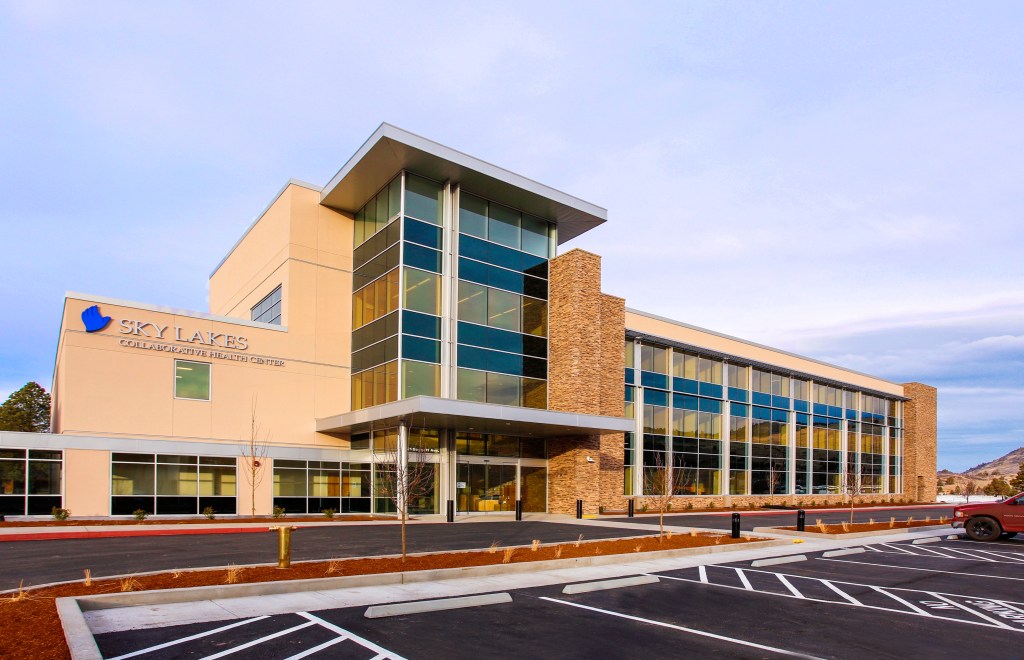New health center strives to fix the healthcare provider shortage in rural Oregon
Published 12:00 am Friday, June 26, 2020

- Sky Lakes Collaborative Health Center
Rural healthcare is getting a makeover.
January 2020, Sky Lakes Medical Center in Klamath Falls cut ribbons to hail the opening of its new Sky Lakes Collaborative Health Center, a 100,000-square-foot, $50 million building.
Among other things, the center will house the new headquarters for Oregon Health and Science University’s Campus for Rural Health, a program to funnel medical students into rural areas.
Experts say the health center will be a game-changer in training generations of medical students to become rural providers. COVID-19 has slowed progress, but as Oregon emerges from lockdown, providers say they are excited for the next batch of students.
The need for more health professionals in rural regions, experts say, is “desperate.” Rural areas have low patient-to-physician ratios and patients often must travel hours to the nearest emergency care, according to data from the National Rural Health Association.
Attracting physicians to remote areas isn’t easy because young professionals flock to cities and pay rates may be lower in rural practices, experts say.
“Rural clinics have a hard time recruiting,” said Betsy Boyd-Flynn, executive director of the Oregon Academy of Family Physicians.
OHSU started its Campus for Rural Health in 2015 to raise up more rural medical providers.
The university encourages its students across disciplines — including medicine, nursing, physician assisting, pharmacy and dietetics — to do a “rural discovery trip,” a four-to-six-week clinical rotation at a rural practice. Students can also stay three to nine months.
Program leaders say exposing students to rural medicine increases the number of students interested in the field. Since the program’s inception, 16 graduates, many from urban backgrounds, have relocated to rural areas for residency or practice.
The program has campuses in Klamath Falls, the south coast and northeast Oregon.
The new Sky Lakes Collaborative Health Center, providers say, will give the program “wings” to reach new heights.
The building will offer more educational and office space, opportunities for distance learning and a simulation theater where students can practice on mannequins with simulated heart rates and other features that emulate real life.
Although the center opened January, the Campus for Rural Health headquarters located within won’t open to students until mid-summer because of COVID-19 disruptions.
The pandemic has profoundly impacted 2020’s batch of medical students. Residency recruitment conferences turned virtual. Boarding and licensing examinations were postponed for dental and physician assistant students. And students doing clinical rotations were sent home.
“It was really, really hard to send the students home, but we had to make sure they were safe and protected,” said Joyce Hollander-Rodriguez, regional associate dean for the Campus for Rural Health.
Providers say they are concerned COVID-19 will result in fewer of this year’s medical students entering rural practice.
Despite disruptions, experts say they are hopeful about the program’s potential.
Katie Harris, director of rural health and federal policy at the Oregon Association of Hospitals and Health Systems, said medical students who do residencies and clinical rotations in rural areas are significantly more likely to stay there.
Most doctors end up practicing within 120 miles of their residency location, said Eric Wiser, medical doctor and deputy director of the Oregon Area Health Education Center.
“They build relationships, buy houses, fall in love with the geography, put down roots,” said Hollander-Rodriguez.
Students also say they love the range of care they experience working in a rural setting.
“When you work in a rural area, because there are so few specialists, you get to do the whole gamut of care,” said Harris.
Alix Cooper, a former Campus for Rural Health student turned doctor-in-residence, described a case in which a woman had a cancerous lesion on her face. The doctor offered to refer the patient to a Portland plastic surgeon, but she preferred to have surgery near home. So, as a student, Cooper got to help perform a complex facial surgery.
“That’s when I thought: ‘This is exactly why I want to be in rural medicine,'” said Cooper.
Hollander-Rodriguez said even if students end up in cities, their rural training isn’t wasted. They are likely to receive referral patients from rural areas they will be better equipped to serve.
“This program bridges the urban-rural divide,” said Hollander-Rodriguez. “Things are a bit up in the air right now with the pandemic, but I’m excited about the lovely things to come.”

